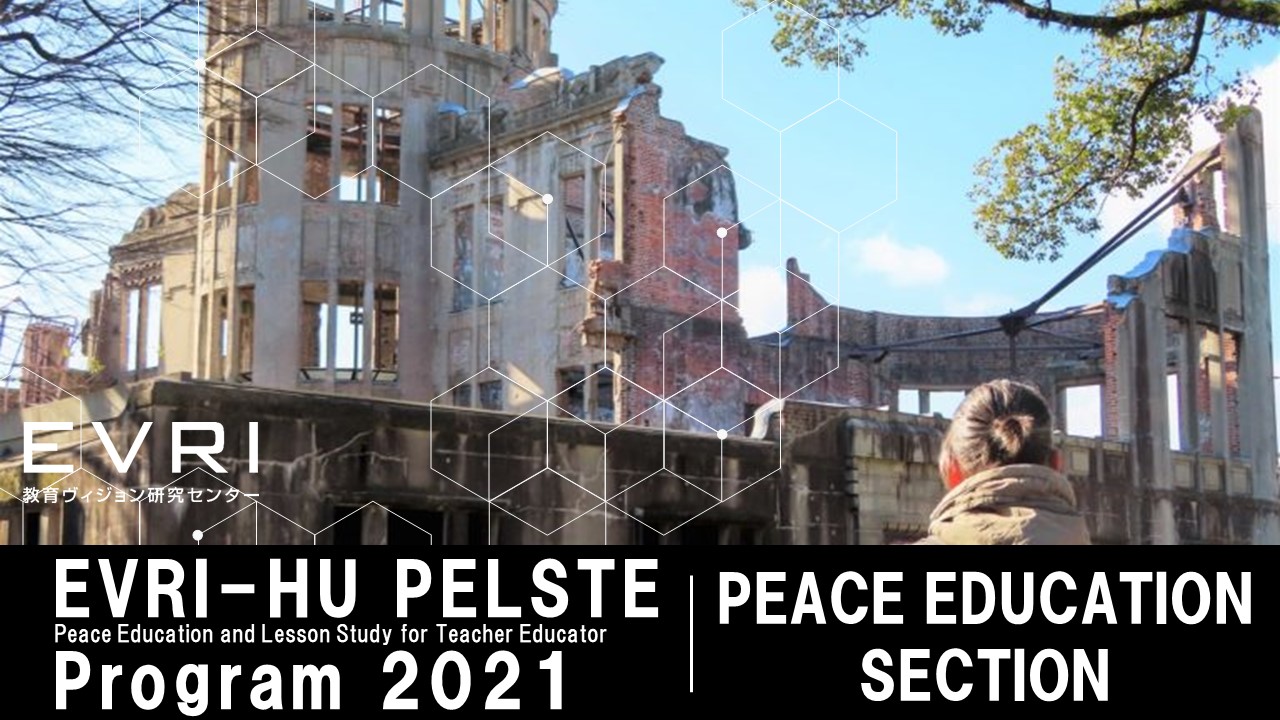
The Peace Education Section of PELSTE 2021 will hold a symposium on March 20, 2021. Based on a close examination of the narratives of some Hiroshima peace educators, we aim to update and redeploy the message from Hiroshima through open dialogues with scholars and educators around the world.
On this page, you will find general information about our symposium as well as learning materials, including some videos and further reading.
*This page is an archived page that originally opened for registration and offerinf learning materials. Now all programs and details are updated at the top page PELSTE 2021 (JP/EN)
>>Links<<
PELSTE 2021 Top Page
PELSTE Peace Education Section Information
PELSTE Lesson Study Section Information
You can see the commentaries by three participants that will be presented during the seminar.
| Cecilia Kyalo’s Commentary | Kevin Kester’s Commentary | Myuri Komaragiri’s Commentary |
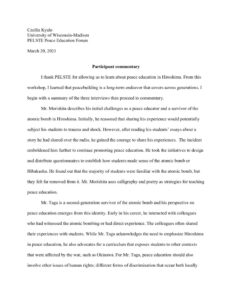 |
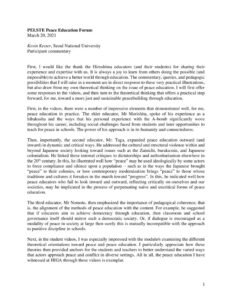 |
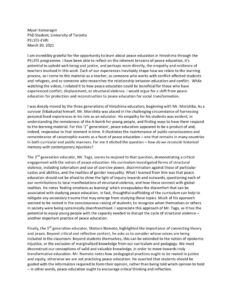 |
【Schedule】
| Date & Time | March 20, 2021 10:00 pm-12:00 am (JST: Japan & South Korea) 1:00 pm-3:00 pm (UTC) ※Please confirm the time regarding summer time *Deadline for registration:March 16, 2021 (Tue.) 6:00 pm (JST) |
| Form | ●Online Symposium (Zoom) |
| Title | ●PELSTE 2021 Peace Education Section |
| Registration | CLICK HERE TO REGISTER (Google Form) |
PELSTE 2021 welcomes three delegates from INEI institutions as “participants” who will present their ideas at the symposium.
【PELSTE 2021:Participants】
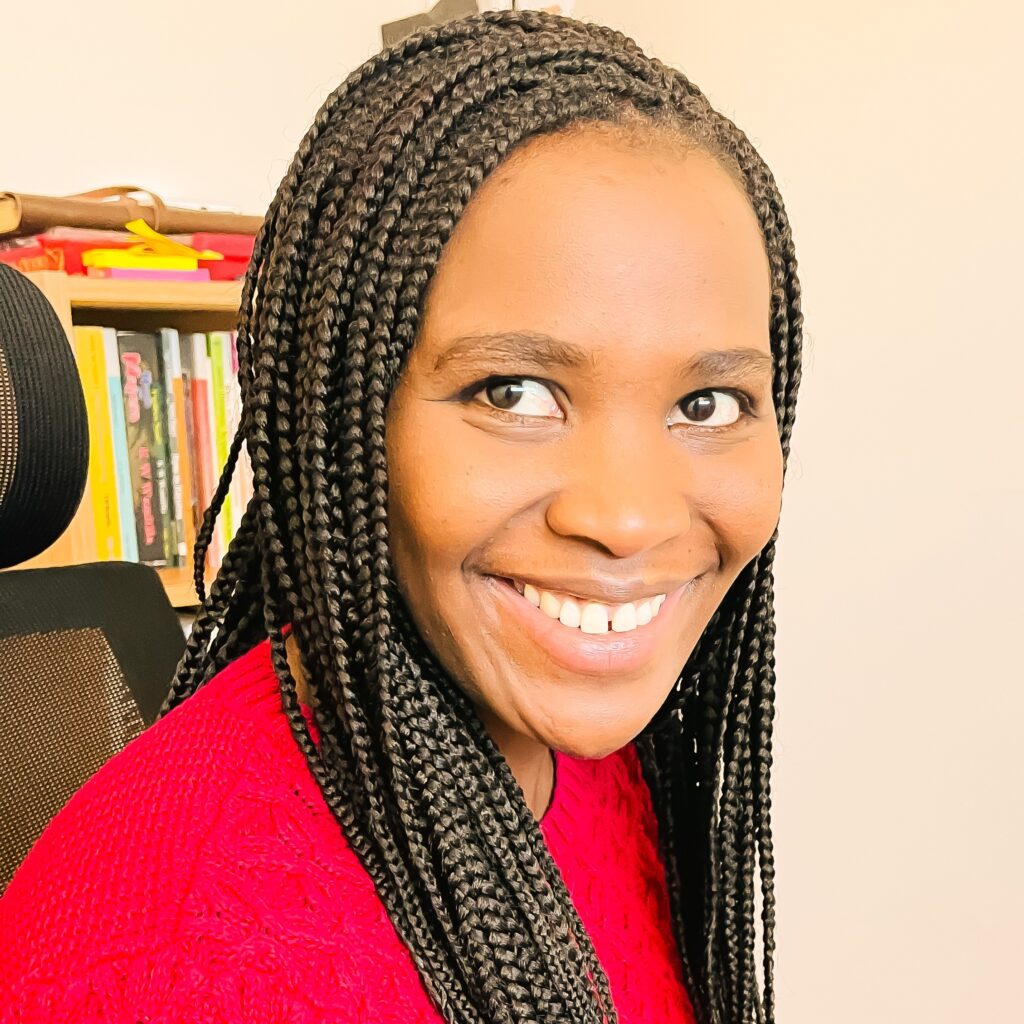 |
Ms. Cecilia Kyalo University of Wisconsin-Madison (United States) “I am a Ph.D. candidate in the Department of Curriculum and Instruction at the University of Wisconsin-Madison. My research is on HIV/AIDS education in Africa. I have extensive experience in teaching English as a Second Language (ESL). I hold a master’s degree in modern languages with emphasis on applied linguistics and TESL from the University of Mississippi and a bachelor’s degree in education, linguistics, and literature from the University of Nairobi. I was a Fulbright Fellow at the University of Florida in 2014 and a Network Fellow with WIDA Consortium in 2018.” Learn more about the delegate |
 |
Dr. Kevin Kester Seoul National University (South Korea) “Hi, I’m Kevin Kester. Assistant Professor of Comparative International Education and Peace/Development Studies at Seoul National University (서울대학교), and Director of the Education, Conflict and Peace Lab. I research educational responses to peace, conflict and development in local and global contexts. My most recent book is The United Nations and Higher Education: Peacebuilding, Social Justice and Global Cooperation for the 21st Century. I completed my PhD and postdoc at the University of Cambridge. Prior to moving to Seoul National University I was Assistant Professor of Education at Keimyung University (계명대학교) and Director of Studies for Education at Queens’ College, University of Cambridge. I serve in various leadership capacities with the Comparative and International Education Society and the Korean Educational Research Association.“ Learn more about the delegate |
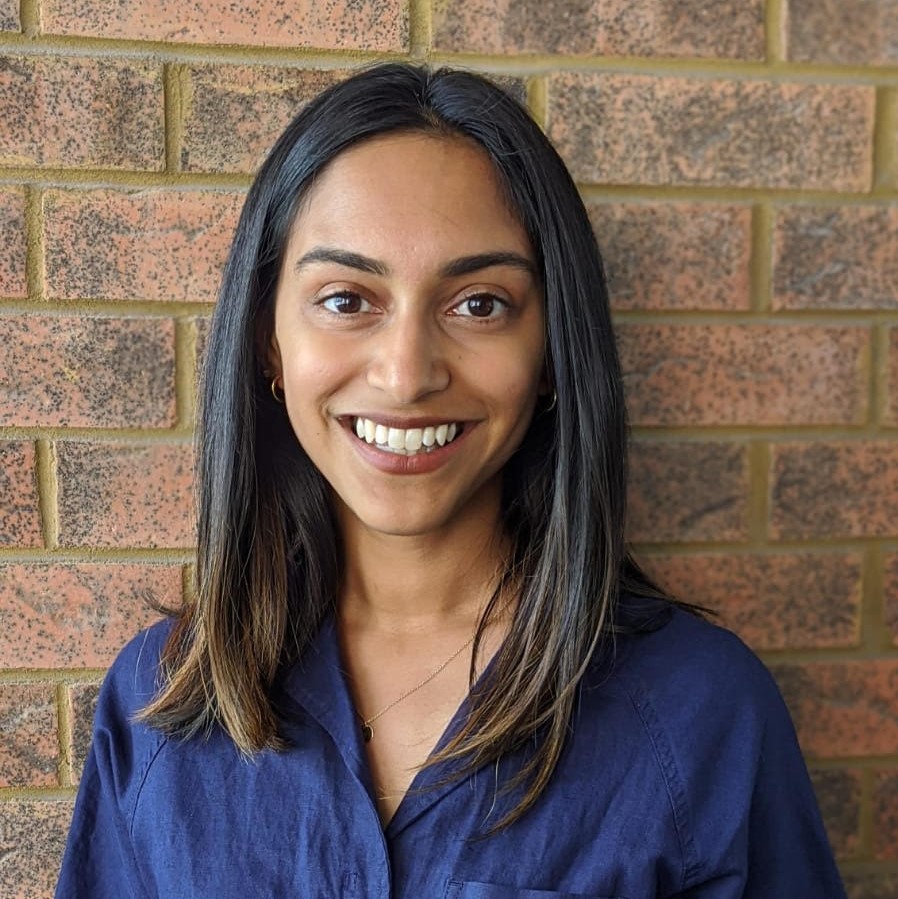 |
Ms. Myuri Komaragiri Ontario Institute for Studies in Education, University of Toronto (Canada) “I am a doctoral student at OISE University of Toronto (Uoft) in Higher Education, where I lead the Education, Conflict and Peacebuilding Interest Group. My research interests are in higher education for stateless and internally displaced populations and the role of higher education in the humanitarian-development-peace nexus. I completed my M.A in Education and International Development at University College London, with coursework and research that concentrated on peace education and education in emergencies. I am also the Program Coordinator for the International Development Studies program at UofT and have worked on education projects in Guatemala, Morocco, and Jordan. I currently advise and mentor two refugee education NGOs that operate out of the MENA region. The engagement with students and teachers that are working in Peace Education is what inspires me to continue research in this area, and I am grateful for the opportunity to learn from and participate in PELSTE 2021.” Learn more about the delegate |
【PELSTE 2021:Coordinators】
 |
Dr. Russell Sarwar Kabir Psychoeducation, Experiential learning Heeding the call from Sankichi Toge that still resonates, “Can we forget that silence / in that stillness?”, peace education helps us honor the stories of those who were lost by awakening and affirming our common humanity. Learn more about the coordinator |
|
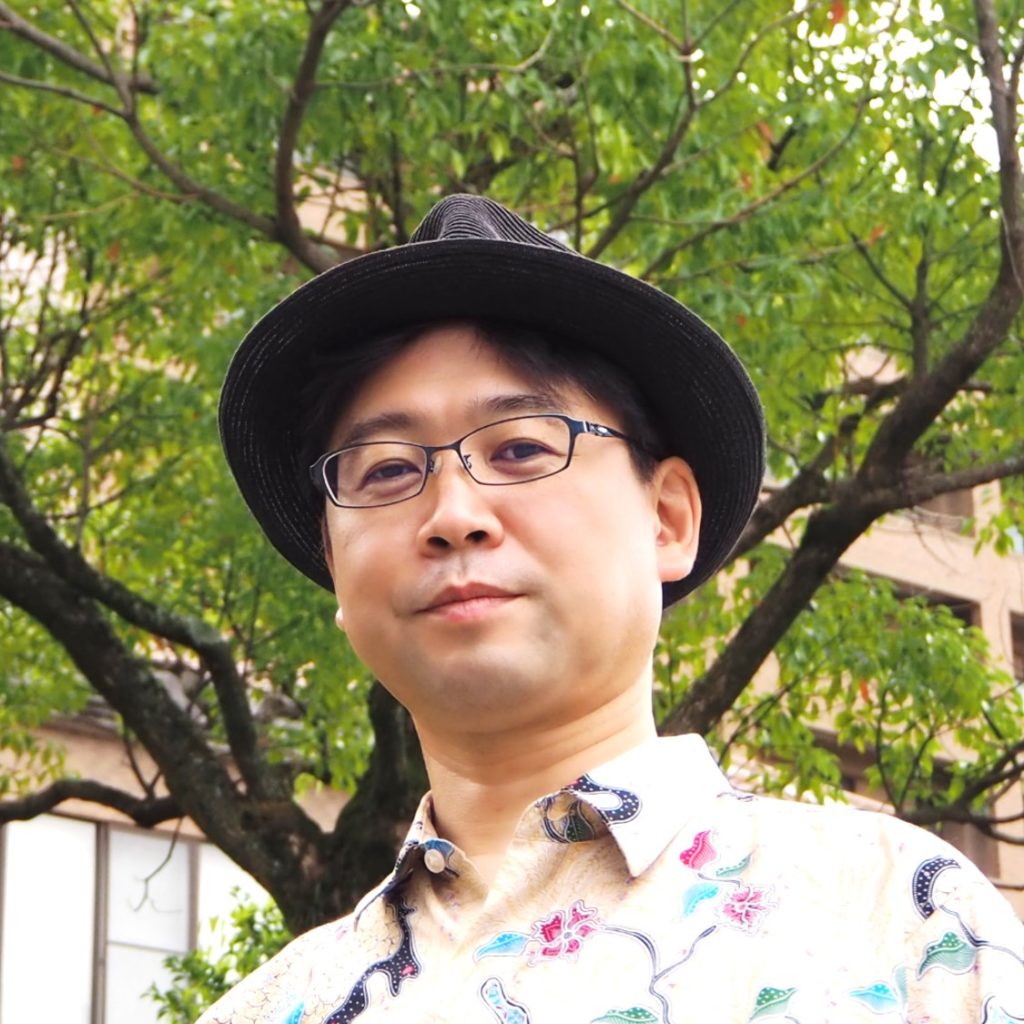 |
Dr. Takayuki Kawaguchi Japanese education, A-bomb literature Let’s talk together about the future of peace education! Learn more about the coordinator |
|
 |
Dr. Yasushi Maruyama Philosophy of Education, Teacher Education “Free yourself from the picture that holds you captive!” Learn more about the coordinator |
Here are the Key Questions that we will explore at the symposium. You can use them as guidelines when going through the learning materials in advance.
1. How and for what purposes was peace taught in Hiroshima?
2. How and for what purposes has peace been taught in your country or region?
3. How and for what purpose should we teach about peace?
1. Interviews with Peace Educators
This is an interview series featuring three peace educators from different generations in Hiroshima after WWII. We asked them the same set of five questions as follows:
1. Why did you become a teacher?
2. How did you teach peace education?
3. What were the motives and challenges in teaching about Hiroshima?
4. What does peace education mean to you in Hiroshima?
5. What is your message to peace educators around the globe?
Attendees are expected to analyze how they discuss their practice of peace education in Hiroshima and critique the narratives from their viewpoint.
When you watch this video, it is recommended that you set up subtitles/closed captions. These will be helpful to “open transcripts” from option “・・・” under the video.
| FILE 1: Mr. Hiromu Morishita | FILE 2: Mr. Shunsuke Taga | FILE 3: Mr. Shotaro Nomoto |
2. Comments on Interviews with Peace Educators
To facilitate bettwe understanding of the contexts, two researchers from Hiroshima University provide some comments about the interviews.
| Comments by Prof. Dr. Takayuki Kawaguchi | Comments by Prof. Dr. Yasushi Maruyama | |||
3. HiGA PEACE EDUCATION PROJECT
Hiroshima Global Academy (HiGA) has developed a peace education curriculum in cooperation with EVRI in 2019–2021. You can watch the video reports of the four units (Projects A–D) and the students’ presentation. This curriculum proposes a new method of peace education in which school education is not a memory device of past tragedies in Hiroshima but a public sphere to reconstruct peace through dialogue with others. Starting from making a textbook with U.S. students (A Project), HiGA students explore the concepts of peace (B Project), critique museums related to war and peace all over the world (C Project), and finally create the HiGA museum with a virtual gallery talk.
| Intro~A project | B project | |||
| C project and D project | Gallery talk | |||
- Symposium Inheritance of HIROSHIMA Memory and Emerging Reconciliation. E-Journal of Philoso@hy of Education Vol. 5.
- Lifton, R. J. (1991). Death in Life: Survivors of Hiroshima. The University of North Carolina Press.
- Yoneyama, L. (1999). HIROSHIMA TRACES Time, Space, and the Dialectics of Memory. Univesity of California Press.
- Zwigwnberg, R.(2014). HIROSHIMA The Origins of Global Memory Culture.Cambirige Univesity Press.
- Cremin, H. (2015). Peace education research in the twenty-first century: three concepts facing crisis or opportunity? Journal of Peace Education, 13 1-17.
- Bar-Tal, D. (2002). The elusive nature of peace education. In G. Salomon & B. Nevo (Eds.), Peace education: The concept, principles and practice in the world (pp.27-36). Mahwah, NJ: Lawrence Erlbaum.
- Langager, M. W. (2006). War Ideation and Peace Education in Japan and the US. The Journal of Social Science. 57, pp. 375-392.
- Hara, K. (2012). Peace Education in the 21st Century : A Comparative Study of Peace Education in Japan, Germany and Bosnia-i-Herzegovina. International Public Policy Studies. 17(1), pp.1-23.
- Page, J. S. (2010). Peace education. International Encyclopedia of Education, (3rd Edition). pp.1-8.
- Haavelsrud, M. (2008). Conceptual Perspectives in Peace Education. Encyclopedia of Peace Education. pp. 1-7.
- Short, J. D. (2005). Proposals for the Future Development of Peace Education in Hiroshima City – Based on a Comparative Analysis of the Peace Education Curricula of Hiroshima and Dresden. Journal of International Development and Cooperation. 11(1), pp. 85–103.
- Yoshida, K., Bui, H. T., & Lee, T. J. (2016). Does tourism illuminate the darkness of Hiroshima and Nagasaki? Journal of Destination Marketing & Management. 5(4), pp.333-340.
- Orihara, T. (2009). Peace Education in Japan’s Schools: A View From the Front Lines. The Asia-Pacific Journal, 7(16)-2, pp. 1-15.
- Ide, K. (2007). A Symbol of Peace and Peace Education: The Genbaku Dome in Hiroshima. The Journal of Aesthetic Education, 41(4), pp. 12-23.
- Thome, M. S. (2017). Hiroshima on Peace Education and Problems with U.S. -Centric Historical Narratives in a World Without Survivors. International Research Scape Journal. 4(3), pp.1-18.
- Doppen, F. H. (2000). Teaching and Learning Multiple Perspectives: The Atomic Bomb. The Social Studies, 91(4), pp. 159-169.
- Maguth, B. M. & Yamaguchi, M. (2020). Lessons from A-bomb survivors: Researching Hiroshima & Nagasaki survivors’ perspectives for use in U.S. social studies classrooms. The Journal of Social Studies Research. 44, pp.325-338.
Because the learning materials are partially highly contextual and local, following links will help your understanding. Please visit the links below as your want.
>>Links<<
PELSTE 2021 Top Page
PELSTE Peace Education Section Information and Registration
PELSTE Lesson Study Section Information and Registration
Feel Free to contact us for PELSTE program
e-mail :evri-info@hiroshima-u.ac.jp
contact >
EVRI-HU PELSTE2021 Lesson Study Section click here